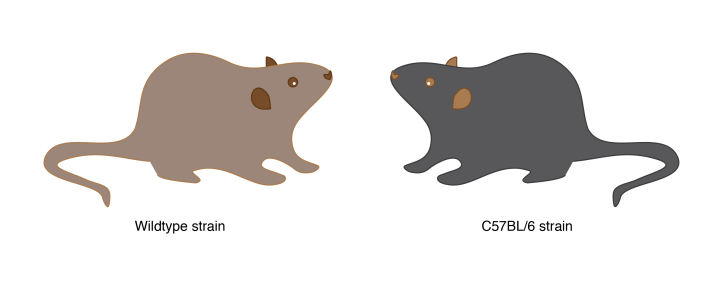One of the most well-studied and highly utilized animals in biomedical research is the mouse Mus musculus. Although their well-characterized biology makes them a useful, tractable model species, some scientists argue that, as captive animals reared under atypical conditions, their immune systems may be different from that of wild mice. Any such differences would have broad implications for the reproducibility of results from lab-reared mice in wild mice. Abolins et al. (2017) addresses this issue by comparing the immunological functions between lab-reared and wild mice. There have been only a handful of immunological studies conducted in wild mice, but knowing the ways in which wild and laboratory-raised mice are immunologically different is paramount. This type of research will help scientists understand how genetically variable populations of other species (including humans) may react differently from an immunological perspective.
Abolins et al. (2017) compared 181 wild mice from the southern part of the United Kingdom to 64 lab-reared, pathogen free mice (C57BL/6 strain). Endpoints measured included: serum concentrations of two immunoglobulins (IgM and IgE), two acute phase proteins (serum amyloid P and haptoglobin), concentrations of IgA in fecal matter, analysis of splenocytes, and serum cytokine profiling.
 The findings demonstrate that the immune systems of wild mice are highly activated compared to lab-reared mice, likely due to encounters with pathogens. Wild mice had higher levels of both IgM (20-fold) and IgE (200-fold), and these levels were positively correlated with age. Interestingly, levels of IgA did not vary significantly between wild and lab-reared mice, and levels of fecal IgA in female wild mice correlated with number of microbial infections well as number of mites. Wild mice also had significantly higher levels of both of the acute phase proteins measured. This means that the immune system of wild mice is more activated, possibly due to more exposure to antigens.
The findings demonstrate that the immune systems of wild mice are highly activated compared to lab-reared mice, likely due to encounters with pathogens. Wild mice had higher levels of both IgM (20-fold) and IgE (200-fold), and these levels were positively correlated with age. Interestingly, levels of IgA did not vary significantly between wild and lab-reared mice, and levels of fecal IgA in female wild mice correlated with number of microbial infections well as number of mites. Wild mice also had significantly higher levels of both of the acute phase proteins measured. This means that the immune system of wild mice is more activated, possibly due to more exposure to antigens.
Spleen sizes of wild mice were significantly smaller (proportionally) and contained fewer numbers of viable mononuclear leukocytes. Cultured splenocytes in the presence of pathogen-associated molecular patterns (PAMPs) from each of the populations were also examined to determine functional immune responses. In wild mice, IFN-γ, IL-4, and MIP-2α responses to anti-CD3/anti-CD28 were significantly higher than responses in laboratory mice, but wild mice produced significantly less IL-12 and IL-13. But what does it mean? All of these responses suggest that the immune system is in a heightened state, which is highly advantageous for wild mice who are constantly coming across potential threats to their health.
Wild mouse spleens had more T cells and higher T:B cell ratios but fewer natural killer cells and dendritic cells. Finally, ratios of CD4+:CD8+ T cells were significantly higher in wild mice. Differences in systemic infections and exposures are likely to drive some of these observed differences. While lab-reared mice are generally only exposed to one antigen at a time, wild mice are being exposed to many antigens at once. This singular vs. multiple antigen stimulation can change how an organism’s immune system responds to the threat(s): can the immune system afford to have a hyper-focused effort to eliminate one threat, or does it have to share resources to deal with several threats?
So what does it all mean? First of all, the mouse is still an excellent model organism for biology, but it does have limitations which should be considered in every study. Laboratory mice have been specifically bred for certain desirable traits (such as size, ease of handling, and ability to breed and thrive domestically), and these traits cannot be untangled from their possible connection with the immune system and its functionality. Going forward, it will be essential to consider the real question that researchers are looking to answer so that they can determine whether a lab-reared mouse or a wild mouse would best help them find that answer.
Journal Article: S Abolins, EC King, L Lazarou, L Weldon, L Hughes, P Drescher, JG Raynes, JCR Hafalla, ME Viney, & EM Riley, “The comparative immunology of wild and laboratory mice, Mus musculus domesticus”, Nature Communications, Vol 8, Article number: 14811 (2017), https://www.nature.com/articles/ncomms14811
Featured Image: Rama, Wikimedia Commons CC BY-SA 2.0